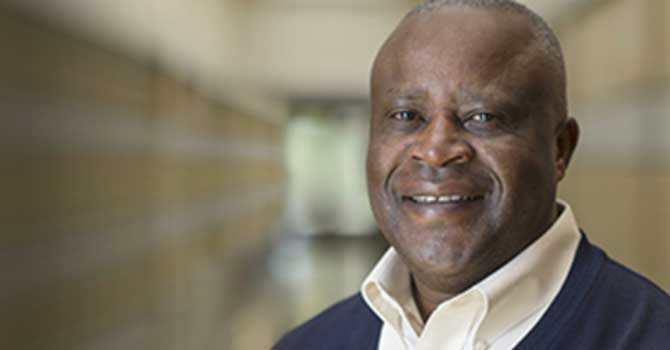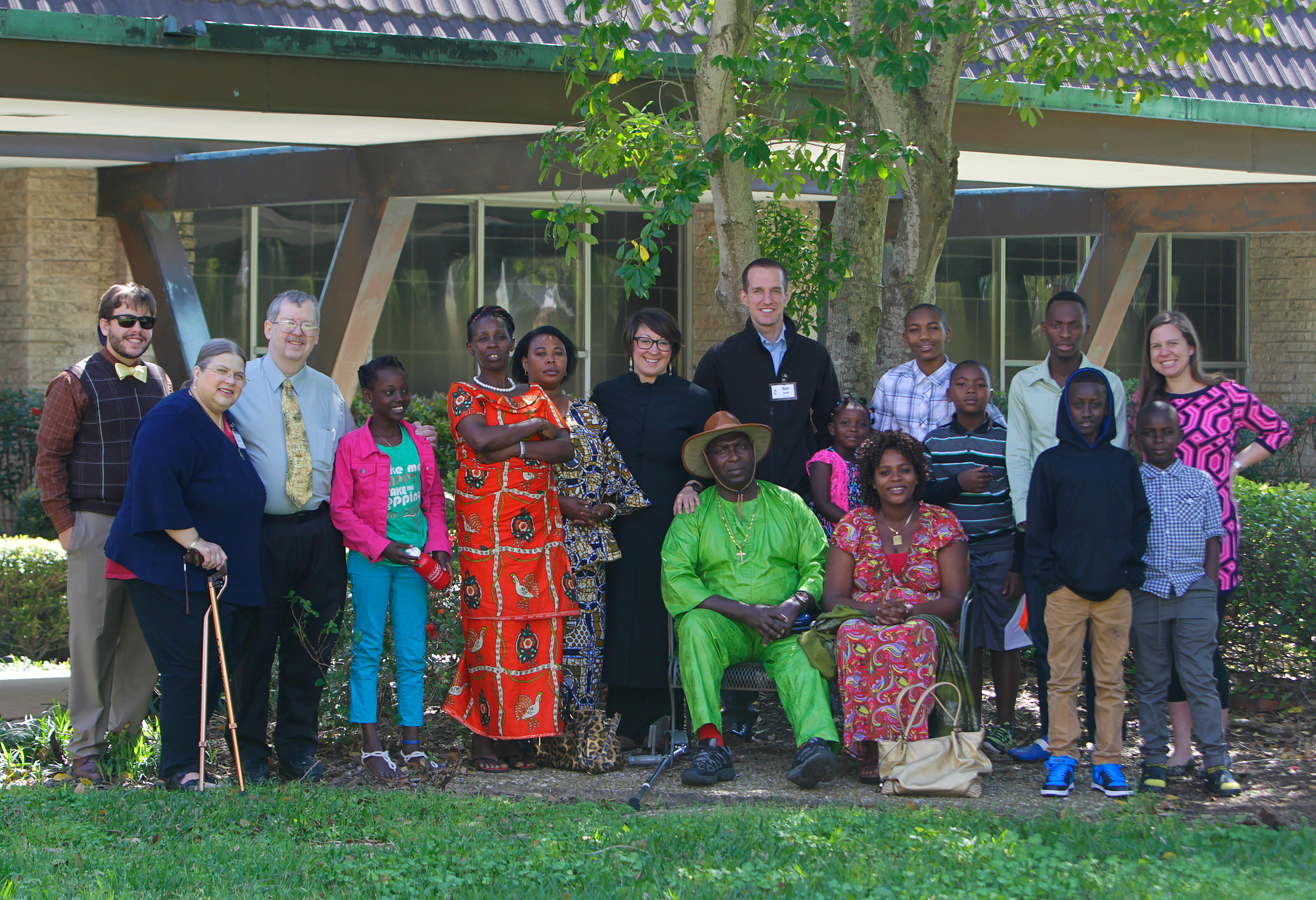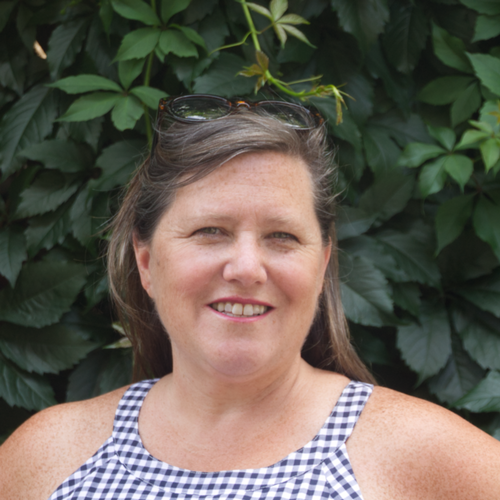It’s not news that the epicenter of Christianity has shifted to the global south. Yet many Christians in America seem unaware of that development, living as though in a bubble, says Wesley Granberg-Michaelson.
“People may have some sense that Christianity has shifted, but they aren’t thinking about what that means for the church in the United States, for the 350,000 congregations here, and how we understand our faith,” Granberg-Michaelson said.
 A former general secretary of the Reformed Church in America, Granberg-Michaelson is the author of “Future Faith: Ten Challenges Reshaping Christianity in the 21st Century.” In the book, he examines major influences on the faith and practice of Christianity in the world today and what they mean for the church in America.
A former general secretary of the Reformed Church in America, Granberg-Michaelson is the author of “Future Faith: Ten Challenges Reshaping Christianity in the 21st Century.” In the book, he examines major influences on the faith and practice of Christianity in the world today and what they mean for the church in America.
The first step for Christians in the United States, Granberg-Michaelson said, is to recognize that they are part of a vibrant global faith.
“It would help American Christians if they reframed their own narrative to see that they’re part of a faith that is thriving globally,” he said. “It’s complicated, but it’s actually pretty exciting.”
To do that, U.S. Christians must recognize “a few simple things.”
“One is that we have to de-Americanize the gospel,” he said. “We have to grasp the gospel in its real intent instead of interpreting it through this shroud of nationalism, which sometimes gets really extreme and causes all kinds of problems.”
That means that Christians in the U.S. can no longer read the Bible simply through the lens of American culture.
“We need to open ourselves to the voices and the movements of Christianity outside our own culture, and that will open up the deep reality of the gospel to us,” he said.
In addition to his work with the Reformed Church in America, Granberg-Michaelson has long been active in ecumenical initiatives including the Global Christian Forum, Christian Churches Together and the World Council of Churches.
He spoke recently with Faith & Leadership about “Future Faith.” The following is an edited transcript.
 Q: Give us an overview of your new book, “Future Faith.” I’ve read where you’ve described it as sort of a “Future Shock” or “Megatrends” for the church.
Q: Give us an overview of your new book, “Future Faith.” I’ve read where you’ve described it as sort of a “Future Shock” or “Megatrends” for the church.
My conviction is that Christianity is at one of those huge points in history. It may be looked back upon like the Reformation, or like 1054, when the split occurred between the Eastern and Western churches, or 312, when Constantine became emperor.
Those were all dramatic points. This is less immediately obvious, but Christianity has undergone the most dramatic geographical shift in its history. Christianity is now predominantly in the global south, where two-thirds of all Christians live.
Those facts have been out there since Philip Jenkins’ work, and that of other people. But within the American church, we live within a ludicrous bubble that makes us think we are the center of everything, when in fact, we are no longer the epicenter.
People may have some sense that Christianity has shifted, but they aren’t thinking about what that means for the church in the United States, for the 350,000 congregations here, and how we understand our faith.
Q: And of course, as you point out in the book, as Christianity undergoes explosive growth in the global south, it’s been declining in the United States. Give us an update on the church in America and the world.
When you visit congregations, especially predominantly white congregations in the U.S., you’ll typically see fewer than 100 people, and a seminary-trained pastor who is committed and trying to do a good job, and they have a food bank, and people volunteer at the homeless shelter, and they give to the denomination.
But if you look around the sanctuary, there’s a lot of white hair and hardly any kids, and despite the deep faith that people have, the congregation is in trouble and is probably going to die.
The statistics bear that out. Today, 50 to 70 percent of the congregations in the U.S. have less than 100 people. Small churches can be great, but when you get below 100 -- to 75, going toward 50 -- then the question becomes, can you sustain this? Is this viable?
And it’s mostly because of age. About 20 percent of the U.S. population is between 18 and 34. But only 1 in 10 congregations in the U.S. has that same proportion of young people. Most churchgoers are much older, and that’s what drives the reality.
Scott Thumma at the Hartford Institute has said that 30 to 40 percent of congregations in the U.S. will close in the next 25 years. I don’t think that’s unrealistic. A lot of serious change is on the horizon.
Even so, that’s mostly about white Protestants, which have declined by 33 percent since 1991. Meanwhile, the religious participation of people of color has increased in the U.S.
In the Assemblies of God, 43 percent of its growth in the last 10 years is driven by nonwhite people, similar to other denominations. In the Catholic Church in the U.S., 54 percent of all Catholic millennials are now Hispanic. The Catholic Church in the U.S. would be in free-fall were it not for immigration.
But the landscape overall [in the U.S.] is decline, particularly in white congregations.
Globally, though, the church is growing -- two-thirds of all Christians today live in the global south. Fifty years ago, Africa’s Christian population was 134 million; now, it’s 631 million. Latin America has about 600 million Christians, and Pentecostalism is growing there about three to four times faster than Catholicism, though Catholicism remains strong. Christianity is also growing rapidly in Asia.
Much of the growth around the world is in forms of Pentecostalism. In 1970, less than 10 percent of Christians were Pentecostal. Today, one out of four Christians identifies as Pentecostal or charismatic.
Pentecostalism tends to grow among the poor on the margins of society, people who have been discarded by society and told they’re worthless. In Pentecostal communities, they find a sense of self-worth and affirmation and community.
And all of this is outside the awareness of most of the American Christian church.
Q: What does this mean for congregations in the U.S.?
I think it means 10 things, which is why I wrote 10 chapters. But the main thing is that it would help American Christians if they reframed their own narrative to see that they’re part of a faith that is thriving globally. It’s complicated, but it’s actually pretty exciting.
It would help if U.S. congregations recognized a few simple things. One is that we have to de-Americanize the gospel. We have to grasp the gospel in its real intent instead of interpreting it through this shroud of nationalism, which sometimes gets really extreme and causes all kinds of problems.
When I travel abroad and am with Christians around the world, whether evangelical or Catholic or Pentecostal, they are astonished at Christian support in the United States for President Trump. They’re not making a political statement; they’re asking, “What has happened to Christian witness within your country?”
This is just bewildering. We can’t cloak our faith within the shroud of nationalism and think that we’re getting to the heart of it. We have to recover the message of Jesus and the language of faith that often goes against the grain of a culture that is parochial and closed in on itself.
Q: Do people in the United States realize how “Americanized” the gospel is here?
No, they don’t. I don’t think they do.
Across the board, our congregations have to come to grips with the fact that we can’t simply read the Bible through the narrow eyes of American culture, especially when that culture promotes nationalism as the highest value. And frankly, when it’s those of us who are white who are doing it, we’re reading it through our white experience and our white eyes, and we’re not seeing the whole gospel.
We need to open ourselves to the voices and the movements of Christianity outside our own culture, and that will open up the deep reality of the gospel to us.
Q: What are the lessons that the church in America can learn from global Christianity and from Pentecostalism in the global south?
It can learn that, first of all, our perspective is not the only way of seeing the world. We’ve got to put on another pair of glasses. One simple lesson is that the mix between the material world and the spiritual world is much deeper and much more interchanged than we think.
Not to get too abstract, but we think there’s a clear line between matter and spirit. But outside our culture, in Native American culture and in Africa and Latin America, people see this differently. They see spiritual reality much more intertwined with life. That’s a much more biblical view, and a deep lesson we can learn.
Regarding Pentecostalism, I ask myself: What’s happening here? Why do we see this upsurge?
I think it’s because there’s a thirst for faith that meets the whole person in a deeper way. In the U.S., we make faith very intellectual. You’ve got to believe the right propositions.
I’ll put it this way. If I talk to evangelicals, they ask me, “What do you believe?” When I talk to Pentecostals, they ask me, “What’s your story?” The power of story and narrative goes far beyond Pentecostalism, but that’s partly why people are attracted. They want worship that appeals to all the senses. And you don’t have to go to a Pentecostal church to do that.
Two months ago, I was at the Taizé community for the first time. I was astonished at this community that prays three times a day with simple chants and words of Scripture. The week I was there, 2,000 kids from Portugal showed up on vacation. This happens every week. They come to participate, and they’re grounded in an experience of worship where they’re not asked to say what they believe, where they’re not told, where they’re not preached at, but where they experience God in this way.
Another thing churches here need to learn is the relationship between the individual and the community. In this culture, we place the individual first, and everything revolves around the individual. It’s what we’ve inherited.
In his book “Community and Growth,” Jean Vanier wrote that any healthy body, any healthy Christian community, has to have more people who say “me for the community” than people who say “the community for me.”
Well, in most of our society and most of our churches, people say “the community for me.” In Africa and Latin America and Asia, Christianity grows in cultures that begin with the importance of community. It’s the way people live.
We don’t think about it much, but the gospel is a call to community, to be a part of the body and to blend with one another. But we think the gospel is what causes me to prosper and be satisfied and be successful. It’s all “me, me, me” -- but that’s not in the Bible.
Q: What are the biggest challenges for U.S. churches in embracing global Christianity and this different approach?
As I said, we live within this comfortable bubble. But if you allow yourself to interact honestly with the biblical story, if you sit with it and listen, it’s designed to break your life open. It’ll do that if you give it a chance.
You don’t have to take a mission trip to Malawi to do that. Just relate to the immigrants who are in your community, who have come as God’s gift. People don’t realize how many of those who immigrate to the United States are Christian.
The word “immigrant” has been so politicized by Donald Trump and others that when you hear it, people think of a person who’s here without papers or illegally. The fact is, most immigrants come here as Christians. And the process of immigration makes anyone’s religious faith grow stronger. That’s a sociological fact; people have studied this.
Immigrants from Africa and Asia and Latin America are here, practicing their faith and living it out in fresh ways, right at our doorstep. And we tend to ignore them. Maybe we rent church space to them and don’t like the smell of their food, but we don’t really interact and learn from them. We can encounter global Christianity in our neighborhoods and in our communities right now because of immigration.
We can also listen. We can simply listen to non-American, non-Western voices out there. They are in the ecumenical world, the Pentecostal world, the evangelical world, the Catholic world.
The great gift to us in all of this is Pope Francis. Why is he saying the things he’s saying? Partly because he is the first Catholic pope from the global south. He’s speaking the language that I hear all the time, whether it’s from Catholics or Protestants.
When I’m in other parts of the world, I hear people talking like Pope Francis and his concern about the environment and about the world being sacred. This seems to be hard for us to understand, with all the climate change deniers. But you go to other cultures and the starting point is exactly the opposite. They say the world is God’s gift and it’s sacred.
Q: Soong-Chan Rah wrote in the foreword of your book that American Christians, rather than embracing this future church, may be threatened by the decline of Western white Christian supremacy and greatness. What is your take on that? So much of what you’re talking about dovetails with much of what’s happening politically in our country right now, especially as it transitions to a much more diverse nation.
The demographics of the U.S. are changing dramatically. A lot of the politically driven fear in our country is in response to that, especially from a white community that is fearful, consciously or unconsciously, of being displaced and without power. What we call white supremacy is being undermined by demographics, and that becomes deeply threatening.
White supremacy is often subconsciously integrated into our church life. It’s not just the U.S. versus a new global reality; it’s these realities right within the U.S. culture. The challenge is whether the church -- especially the white church -- will be able to make the transition that it has to make, out of a sense of belonging to the most culturally diverse body on the face of the earth. What that means in terms of power and dynamics and voice -- all those questions come right home within the issues that we’re facing within our culture, within the issues you’re facing at Duke Divinity, within the issues that the church is facing in virtually any context.
Q: So much of what you describe in “Future Faith” is so countercultural to how we live in this country.
It is. But that’s what it means to follow Jesus, and that’s what we have to reclaim.
When I talk to pastors, they ask me, “How do I get my hands around this? What do I do in my congregation?” And I say, “Well, what about preaching about Jesus? You should find a good start there.”
The heart of it is getting back to talking about the real Jesus, the one we say we follow. What can unlock this for most congregations in the United States is to recover the radical, true and authentic message of Jesus.
Q: You say in the book that a key foundational theological question we need to ask is, “What does God love, and why?” What do you mean?
The biggest damage that American culture and Christianity within the U.S. has done to the faith is this division between what was the evangelical and the social gospel. One branch of Christianity has focused on personal salvation, and another has focused on social justice. This isn’t just a theological division; it’s an institutional division. You live within one of these two worlds, in a gospel that’s completely bifurcated and so untrue to the central message of Jesus.
I like to reframe that by asking, “What is it that God loves?”
If we start with that question, then we start at a new point that gets us out of this crazy bifurcation between a faith that’s just personal and individual and a faith that’s focused on the ways in which God’s purposes are to transform society. You can’t keep those things separate if you ask, “What is it that God loves?”











